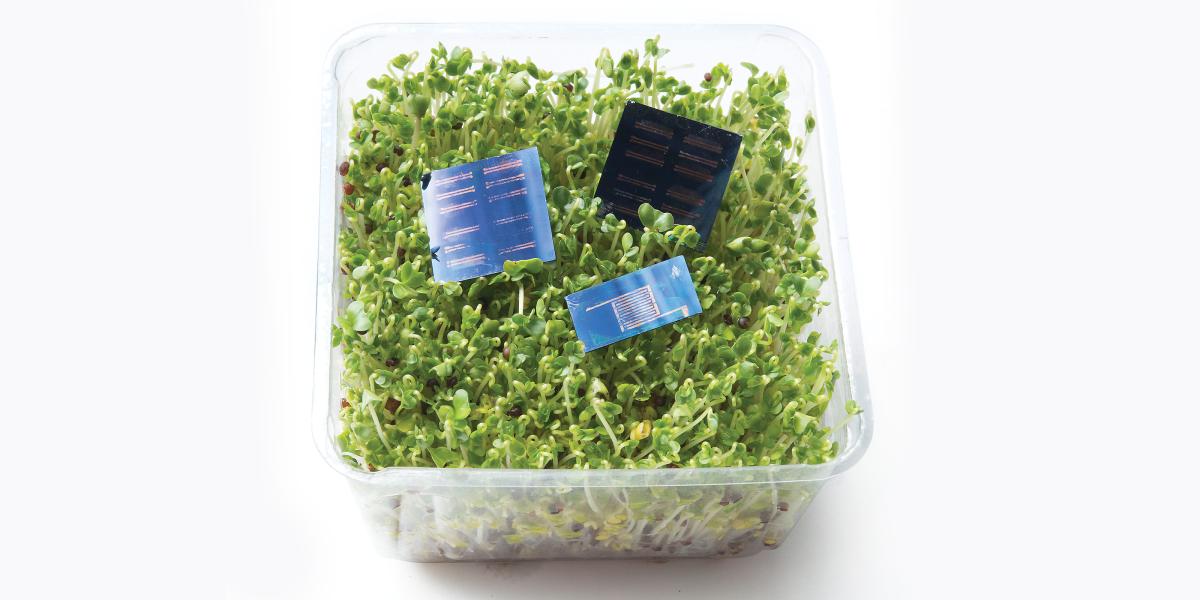Sensing Danger
Can a silicon chip stop E. coli and Salmonella outbreaks before they happen?
For Jennifer Dailey, the seed was planted in 2010 after she suffered through a bout of sprouts-induced food poisoning.
Now, it’s starting to bear fruit. Dailey, MSE, is working to develop a fast, affordable and accurate biosensor that can detect foodborne pathogens—research supported in part through a Lerner Fellowship from the Johns Hopkins Center for a Livable Future.
The ideal outcome? Reducing foodborne illnesses—which sicken 48 million Americans each year, according to the CDC—by identifying contaminated food in the field or production facilities before it reaches grocery stores, restaurants, hospitals, nursing homes or other places that sell or serve food.
“Currently, it takes days to culture the bacteria, and by that time you may have already purchased the product in the supermarket,” says Dailey, a materials science and engineering doctoral student at Johns Hopkins’ Whiting School of Engineering. “We’d like to be able to intervene before it gets to the consumer.”
At the core of Dailey’s work is a one-square-inch silicon chip with electrodes, made from thermally evaporated gold. As she envisions it, the chip will serve as a platform for various chemical films or polymers. These nanostructured films will react by altering a small electrical input when it detects antibodies of a specific pathogen, such as E. coli or Salmonella. Another key piece of the project involves devising a nanotechnology-based optoelectronic circuit to read the biosensor—work that several technology companies are exploring.
While Dailey’s research is still in the proof-of-concept stage, her plan is to advance the project over the next two years, testing a variety of pathogens to evaluate the efficacy of the sensors.
Dailey became interested in exploring the use of biosensors to improve food safety after a conversation with her Bloomberg School adviser, Ellen Silbergeld, PhD ’72. The Environmental Health and Engineering professor has done foundational research on the connection between industrial food production and antibiotic-resistant bacteria in the food supply, the environment, workers and rural communities.
“Our methods for assessing food safety have not advanced from the late 19th century,” says Silbergeld, who believes that the ability to detect foodborne pathogens in real time via biosensors has the potential to “revolutionize” food testing.
